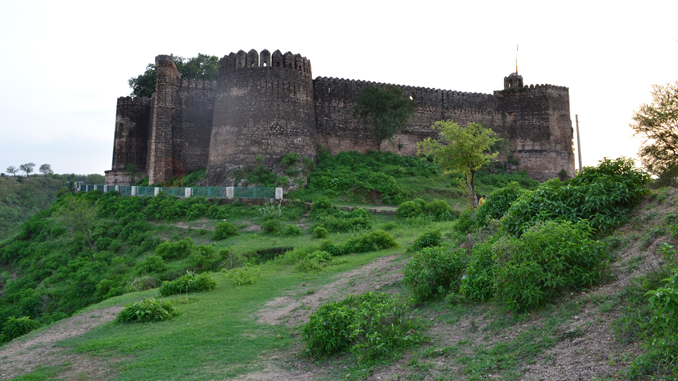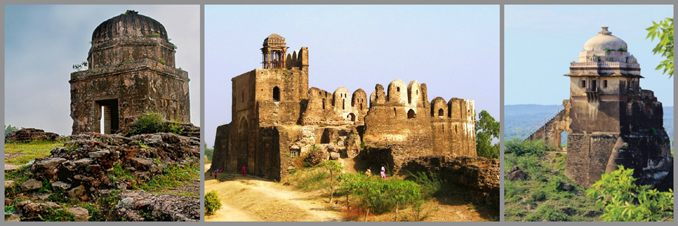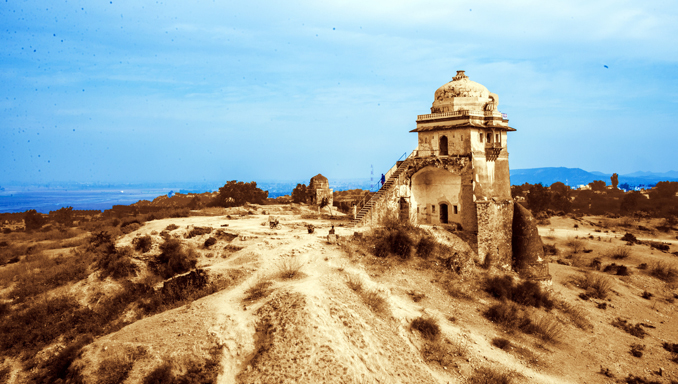Written by: Amna Javed
Posted on: April 23, 2015 | 
Gurdwara and Temples in Bagh Sardaraan and Sagri Village, Rawalpindi
Initially a small city, Rawalpindi’s economy received a tremendous boost during 1959-1969, while Islamabad was under construction and it served as the National capital. Rawalpindi also serves as the Military Headquarters of the country. As the city is easily accessible through Motorway and G.T. Road, it is also considered the basecamp for tourists intending to travel up north to the Gilgit region and beyond. Numerous old ‘bazaars’, parks and a bubbling cosmopolitan population attract shopping enthusiasts from across the country. Exploring the crowded alleys of the old city would also be of interest to those visiting the city. These attractions include Hindu, Sikh and Zoroastrian temples and well as Muslim Shrines. A stroll around the old city of Rawalpindi, in areas like Akaal Garh, Amarpura and Bagh Sardaraan, would give tourists an insight into Rawalpindi’s heritage.

The city and its surrounding areas boast a diverse industrial base but its economy is primarily driven by the services sector. The area, although it hosts numerous factories, is not known for its industrial goods. Rapidly transforming into a large city, Rawalpindi has many good hotels, restaurants and parks that add value to the traveller’s experience.
Moving on from Rawalpindi, the road then reaches the Gujar Khan region. This area possesses considerable natural resources in the form of petroleum and gas and has the potential to generate tremendous opportunities for exploration and excavation of these resources. Gujar Khan is also home to historical attractions such as the Sangni Fort that was built by an old Maharaja of Punjab, and preserves the relics of buildings that were constructed hundreds of years ago.

Heading further south along the G.T. Road, we then reach the bank of river Jhelum. Jhelum derives its name from the words ‘Jal’ (pure water) and ‘Ham’ (snow), as the water that flows through the river originates in the Himalayas. Known as the city of soldiers or the land of martyrs, Jhelum city has been renowned for providing a large number of soldiers to the British Army and after independence, to the Pakistan Army. This city, populated along the riverbank, is close to the site where the ‘Battle of Hydaspes’ was fought between Alexander and Raja Porus. A city with the name of Bucephalus was founded nearby to commemorate the death of Alexander’s horse, Bucephalus.
Other notable sites near the city include the 16th Century Rohtas Fort and the Tilla Jogian complex of ancient temples. Rohtas Fort, built by the famous Afghan ruler Sher Shah Suri, was a garrison fort and stands as a symbol of fine pre-Mughal military architecture. It depicts the successful amalgamation of Pukhtun and Hindu design in the sub-continent. Few of the buildings that had been erected in the fort’s inner citadel also survive today. Amongst these, the most enigmatic and worth seeing, is Haveli Man Singh. This dome tower is the only surviving example of Hindu architecture within the fort. The fort is now a UNESCO World Heritage Site. The city also has a fascinating labyrinth of narrow streets and crowded bazaars. The cantonment area houses the St. John’s Church that was built in 1860, which is also worth visiting.

At a distance of about 30 kilometers from the city is the Mangla Dam, the twelfth largest dam in the world. Constructed in 1976 across the River Jhelum, the dam site has also been developed as a resort with residences, villas, hotels, serviced apartments and retail outlets. The area also offers numerous recreational activities, including water sports.
Destinations along the G.T Road can be accessed easily because numerous transportation options are available and link roads have been built to reach these areas. An increase in economic activity and tourism along this route would provide a significant uplift in the socio-economic conditions of the local population and would also allow small villages and towns in the vicinity to benefit from this growth.
You may also like: